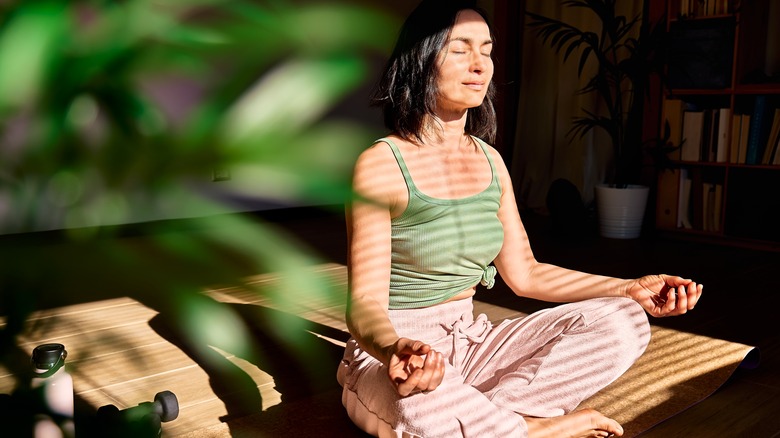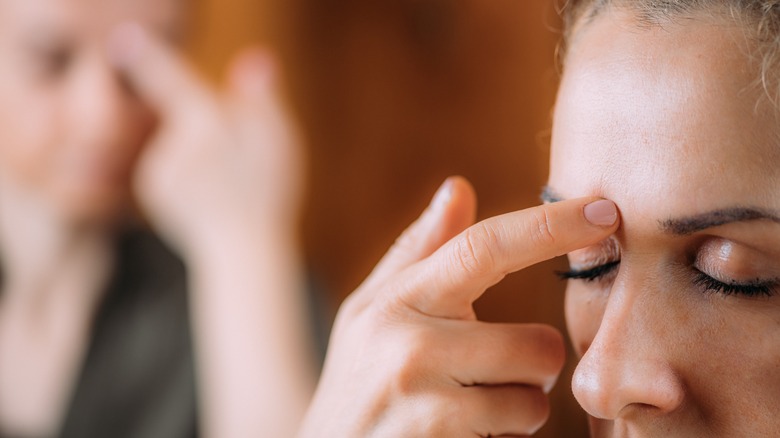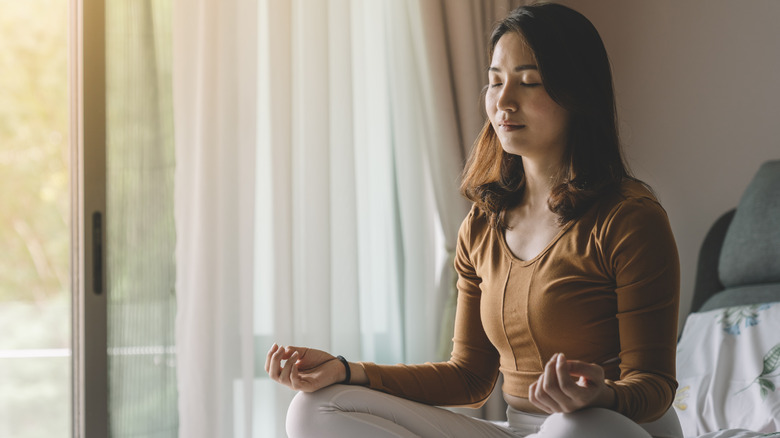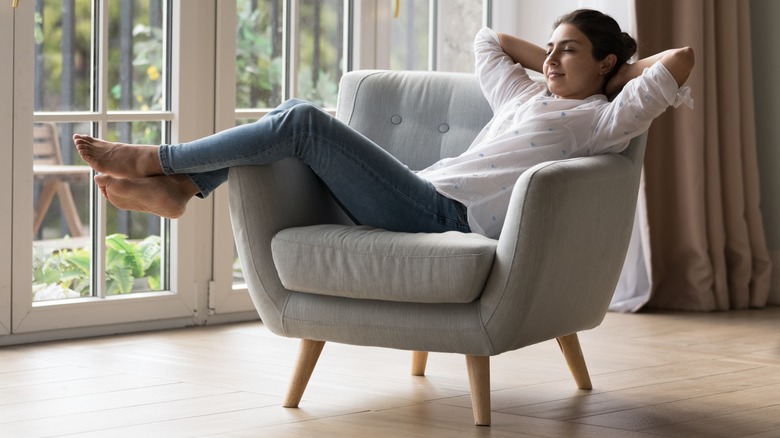Micro-Meditations Are The Mindfulness Practice That Meets You Where You Are
It is now widely accepted that practicing mindful meditation can provide you with many health benefits of both the physical and mental variety — from stress relief to reduced blood pressure. While many assume that establishing a meditation practice requires an unattainable amount of time each day, this is not the case. There is no meditation too small to provide benefits to your well-being. If you're new to meditation, struggle with mindfulness, or don't have time to add a new routine to your day, try micro-meditation.
A micro-meditation is a very short meditation that focuses on bringing your mind and body back into the present moment and resetting your nervous system. These techniques can be performed in as little as one minute to help you tap into your surroundings and drop into your body's sensations. Try out each of the following meditations to see which one best fits into your daily routine.
Box breathing
Box breathing, also known as square breathing, is a simple exercise that requires mindfully breathing in for four counts, gently holding the breath for four counts, and then exhaling for four counts. Repeat the technique at least four times, focusing only on counting and the filling and emptying of your lungs. As you begin the exercise, take note of whether you're breathing from the chest or the belly.
If you notice your chest rising and falling as you breathe, make a conscious effort to switch to breathing from your diaphragm, which is located below the lungs in the upper belly. Start by transitioning your breathing during the exercise and then work toward switching to belly breathing all the time. Breathing from the belly promotes a more complete exchange of oxygen, which can have a beneficial effect on key bodily functions like heart rate and blood pressure, according to Harvard Medical School.
Emotional Freedom Technique (EFT) tapping
Emotional Freedom Technique (EFT) tapping is a form of Eastern medicine widely adopted across the United States in recent years. In 2017, the technique was approved as a safe and effective treatment for PTSD and depression by the US Veterans Administration. The technique is based on acupressure, which involves putting pressure on specific points along the body's energy meridian, and these are the same points where needles are applied during acupuncture.
Emotional Freedom Technique tapping involves using your fingertips to tap on acupressure points. Typically, a session includes tapping seven times each on the crown, forehead, brow, outer eye, under-eye, upper lip, chin, collarbone, hand, and underarm. While you tap, repeat an affirmation that states your acceptance of yourself despite any negative feelings you're experiencing. For example, you might say, "Even though I experience anxiety, I fully love and accept myself." Once you've memorized the acupressure points, this process can be finished in just one or two minutes.
Candle breathing
Candle breathing, also known as straw breathing or pinwheel breathing, is a somatic breathwork technique that helps reset your nervous system while strengthening your connection to your body. To candle breathe, inhale deeply through your nose. Gently hold your breath for a moment, then exhale through pursed lips as if you were blowing out a candle, blowing through a straw, or blowing on a pinwheel. There is no counting or timing involved in this method.
Rather than timing your breathing, candle breathing encourages you to trust your intuition to guide you, so it's very easy to do at any time. Breathe in to the point that feels right in your body. Hold your breath until you feel it has been long enough, and then exhale until the exercise is complete. Repeat as many times as necessary to ground yourself and switch your nervous system from "fight or flight" mode to "rest and digest" mode.
Intuitive movement
If you're an active person who can't fathom sitting still long enough to meditate — even on a micro-scale — consider giving intuitive movement a try. Intuitive movement is precisely what it sounds like — moving your body intuitively. There are no instructions, steps, or specific movements. You simply tune in to your body and move in whichever way comes to mind without any second-guessing, even if it feels silly or embarrassing.
If you're unsure how to start moving, start by standing up and stretching like you normally would. Then, let your intuition take over. Stretches, dance moves, stomping, twerking — anything goes, and nothing is judged or suppressed. Begin by setting a timer for just two or three minutes of movement and then adjust until you find the amount of time that feels right. Obviously, this method is probably best saved for after work unless you work from home or feel very comfortable with your coworkers.
Visualization
Visualization is a powerful tool for meditation in any quantity and can be used in various ways. Envisioning yourself pulling up on a string connected to your spine might help you correct your posture at the beginning of each meditation session. Visualizing your inhales bringing clean, white light energy into your body and your exhales releasing gray, stagnant energy that grows lighter with each breath can help to reset your mind and body during a stressful or depressive moment.
If you've experienced a place or a situation in which you felt completely at ease and relaxed, visualizing yourself back in that moment can allow you to feel the same sensations in the present moment. Imagining a vine extending from deep within the earth and wrapping itself gently around your body can elicit a feeling of grounding and security. Experiment with different forms of visualization until you find what works to reset your nervous system in a short amount of time.
Humming
The simple act of humming can stimulate the vagus nerve, which regulates your parasympathetic nervous system and operates as a switch between its "fight or flight" and "rest and digest" modes. This is likely why many serious meditators are known to hum or chant during meditation. You don't need to hum an entire song or even come up with a melody to try this method. With a closed mouth, simply hum a sustained "mmmm" sound for about 10 seconds.
Repeat the hum as many times as you feel is necessary to bring your mind and body together in a sense of peace and calmness. Any micro meditation exercise, when repeated a few times each day, can add up to a significant practice that trains your brain and body to respond in the way you desire. If you've been putting off trying meditation because of time limitations, there is no better time than now.






